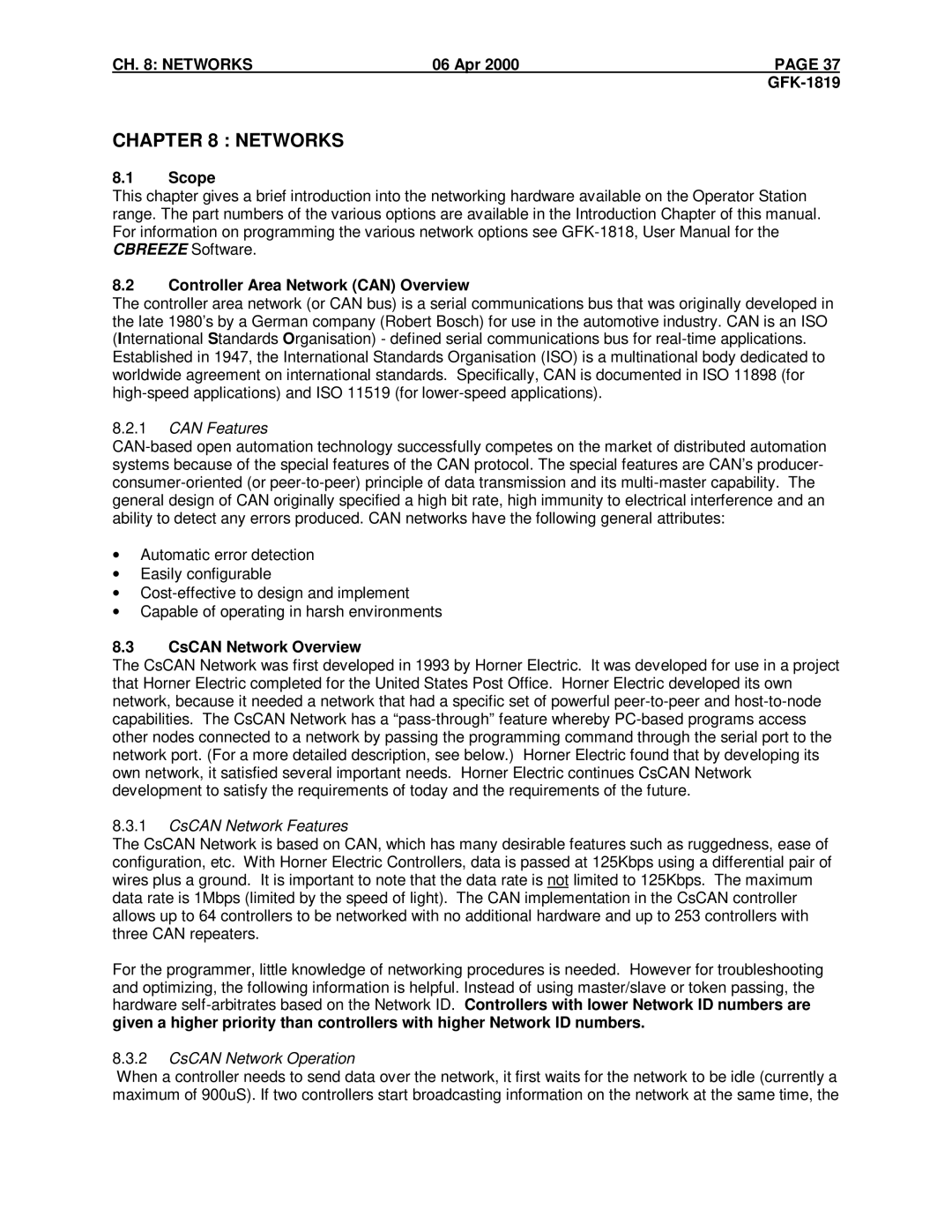CH. 8: NETWORKS | 06 Apr 2000 | PAGE 37 |
|
|
CHAPTER 8 : NETWORKS
8.1Scope
This chapter gives a brief introduction into the networking hardware available on the Operator Station range. The part numbers of the various options are available in the Introduction Chapter of this manual. For information on programming the various network options see
8.2Controller Area Network (CAN) Overview
The controller area network (or CAN bus) is a serial communications bus that was originally developed in the late 1980’s by a German company (Robert Bosch) for use in the automotive industry. CAN is an ISO (International Standards Organisation) - defined serial communications bus for
Established in 1947, the International Standards Organisation (ISO) is a multinational body dedicated to worldwide agreement on international standards. Specifically, CAN is documented in ISO 11898 (for
8.2.1CAN Features
•Automatic error detection
•Easily configurable
•
•Capable of operating in harsh environments
8.3CsCAN Network Overview
The CsCAN Network was first developed in 1993 by Horner Electric. It was developed for use in a project that Horner Electric completed for the United States Post Office. Horner Electric developed its own network, because it needed a network that had a specific set of powerful
8.3.1CsCAN Network Features
The CsCAN Network is based on CAN, which has many desirable features such as ruggedness, ease of configuration, etc. With Horner Electric Controllers, data is passed at 125Kbps using a differential pair of wires plus a ground. It is important to note that the data rate is not limited to 125Kbps. The maximum data rate is 1Mbps (limited by the speed of light). The CAN implementation in the CsCAN controller allows up to 64 controllers to be networked with no additional hardware and up to 253 controllers with three CAN repeaters.
For the programmer, little knowledge of networking procedures is needed. However for troubleshooting and optimizing, the following information is helpful. Instead of using master/slave or token passing, the hardware
8.3.2CsCAN Network Operation
When a controller needs to send data over the network, it first waits for the network to be idle (currently a maximum of 900uS). If two controllers start broadcasting information on the network at the same time, the
